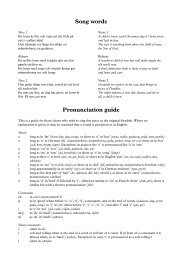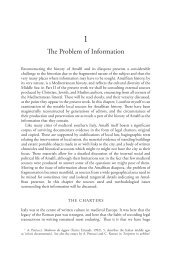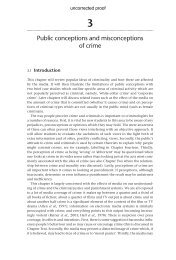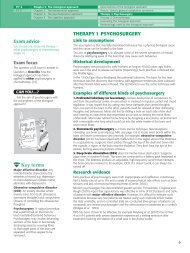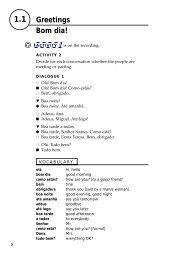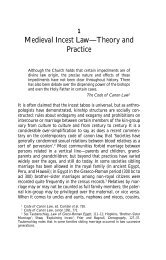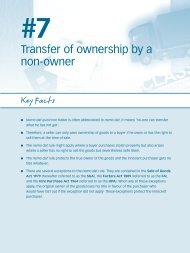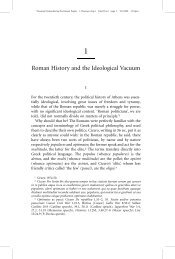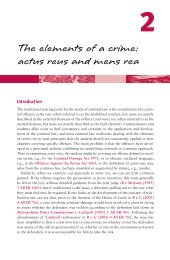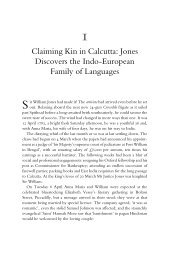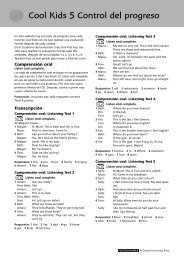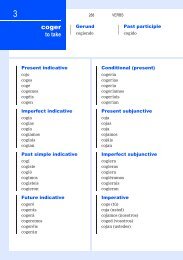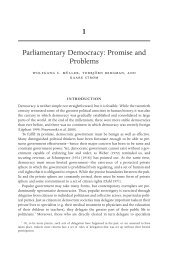Temperature (1) - Oxford University Press
Temperature (1) - Oxford University Press
Temperature (1) - Oxford University Press
You also want an ePaper? Increase the reach of your titles
YUMPU automatically turns print PDFs into web optimized ePapers that Google loves.
Using expansion<br />
alcohol (or mercury) ‘thread’ narrow tube<br />
In the thermometer above, the liquid in the bulb expands when the<br />
temperature rises. The tube is made narrow so that a small increase in volume<br />
of the liquid produces a large movement along the tube, as explained in the<br />
previous spread, 5.03.<br />
bimetal strip: cold ...hot<br />
invar<br />
brass brass expands most<br />
In the bimetal strip above, thin strips of two different metals are bonded<br />
together. When heated, one metal expands more than the other, which makes the<br />
bimetal strip bend. Bimetal strips are used in some thermostats – devices for<br />
keeping a steady temperature. The thermostat shown on the right is controlling<br />
an electric heater.<br />
Water and ice*<br />
When hot water cools, it contracts. However, when water freezes it expands<br />
as it turns into ice. The force of the expansion can burst water pipes and split<br />
rocks with rainwater trapped in them.<br />
Water expands on freezing for the following reason. In liquid water, the<br />
particles (water molecules) are close together. But in ice, the molecules link up<br />
in a very open structure that actually takes up more space than in the liquid –<br />
as shown in the diagram on the right.<br />
Ice has a lower density than liquid water – in other words, each kilogram has<br />
a greater volume. Because of its lower density, ice floats on water. When liquid<br />
water is cooled, the molecules start forming into an open structure at 4 �C,<br />
just before freezing point is reached. As a result, water expands very slightly<br />
as it is cooled from 4 �C to 0 �C. It takes up least space, and therefore has its<br />
maximum density, at 4 �C.<br />
Q 1 Explain the following:<br />
a A metal bar expands when heated.<br />
b Overhead cables are hung with plenty of slack in<br />
them.<br />
c It would not be a good idea to reinforce concrete<br />
with aluminium rods.<br />
d A bimetal strip bends when heated.<br />
e* Water expands when it freezes.<br />
Related topics: density 1.04; kinetic theory and particles 5.01; thermometers 5.02<br />
°C<br />
THERMAL EFFECTS<br />
current<br />
from<br />
supply<br />
control knob<br />
contacts<br />
� Bimetal thermostat When the<br />
temperature rises, the bimetal strip<br />
bends, the contacts separate, and the<br />
current to the heater is cut off. When<br />
the temperature falls, the bimetal<br />
strip straightens, and the current is<br />
switched on again. In this way, an<br />
approximately steady temperature is<br />
maintained.<br />
molecules in liquid water<br />
molecules in ice<br />
current<br />
to<br />
heater<br />
brass<br />
invar<br />
bimetal strip<br />
2 This question is about the thermostat in the diagram at<br />
the top of the page.<br />
a Why does the power to the heater get cut off if the<br />
temperature rises too much?<br />
b To maintain a higher temperature, which way would<br />
you move the control knob? – to the right so that it<br />
moves towards the contacts, or to the left? Explain<br />
your answer.<br />
105




